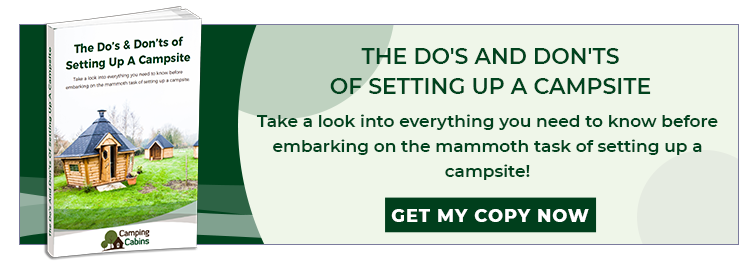
Drainage for new campsites must be one of your top priorities as a site owner, because it is a health and safety issue which cannot be taken lightly. As the owner of a camping or caravan site, you have a duty of care to ensure that those who use your site are aware of the flood risks and know what to do in an emergency. The local council will probably have attached certain flood-related clauses to your license, and most will require you to display a flood warning sign.

Know Your Flood Risk
Before opening to the public, you need to be sure you have all the information you need on your camping site’s flood risk. In addition to checking out local flood risk maps, it’s also worth speaking to local residents, the council and the Environment Agency, who will know whether a site has been flooded in the past and the likelihood that it will flood again.
Flood Warning Signs
You can find a flood warning sign template online through the government’s own website, and use this as the starting place for your own warning signs. Signs should always include a sitemap displaying emergency access routes and assembly points. It’s also worth posting a daily weather forecast on your board which you can update with the latest weather news.
Think about any special needs which people might have when it comes to signage, for example, lower signs for wheelchair users, signs in large print for those with sight problems and signs in other languages.
Your signs should be prominently displayed at your reception area, in car parks, around water points and close to wayfinding signposts.
Write A Flood Plan
Having a flood plan already in place for when the worst happens can minimise the impact of flooding. You should include a site plan with clearly marked emergency access routes, isolation points for gas and electricity so they can be shut off, the location of life rings and safe assembly points.
Have an up to date contact list with numbers for the emergency services, the Floodline and your insurance company. You should also train staff in what to do in an emergency and decide between you when an evacuation should be triggered. Have an alarm system in place and ensure it’s always maintained and ready for use.
In the meantime, you should explore how drainage for new campsites can be improved before a flood strikes. The better prepared you are, the safer your campsite will be.







